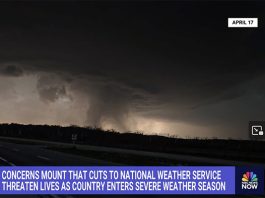 Last fall, I hosted Victor Shelton at my farm. Victor is Indiana’s NRCS Grazing Specialist, a beef farmer, and the author of “Grazing Bites,” and lots of great articles in On Pasture. During our pasture walk, Victor and I discussed the effects of “Perpetual Novembers,” when the ground doesn’t freeze, killing frosts happen later, and plants may not go dormant because of warmer temperatures. As he looked at my pastures, he suggested I leave more residual in the fall of 2019 to improve plant and soil health resiliency under these conditions. I took his advice to heart and left 4 to 6 inches of residual behind for winter.
Last fall, I hosted Victor Shelton at my farm. Victor is Indiana’s NRCS Grazing Specialist, a beef farmer, and the author of “Grazing Bites,” and lots of great articles in On Pasture. During our pasture walk, Victor and I discussed the effects of “Perpetual Novembers,” when the ground doesn’t freeze, killing frosts happen later, and plants may not go dormant because of warmer temperatures. As he looked at my pastures, he suggested I leave more residual in the fall of 2019 to improve plant and soil health resiliency under these conditions. I took his advice to heart and left 4 to 6 inches of residual behind for winter.
Since lots of folks have asked about how much residual to leave when grazing pastures in winter, I’m sharing my results. This video describes what I found on April 6, 2020 and how that affects my spring grazing planning. You’ll also be able to see how pastures are responding in a side-by-side comparison of the pastures from January 5, 2020 and on April 6. The pictures are in order of when the last graze was in that pasture, so you’ll see how more rest resulted in more regrowth in April.
The result of leaving more residual is also playing out as we start grazing. Those pastures with rested roots from last year’s higher residuals have me ahead of neighboring graziers by 2 weeks even though the weather has been quite cool for so far. Another question for me is, will this stronger sward lower the weed pressure of spotted knapweed? Measuring that is one of my tasks going forward as well as showing the grazing planning decision-making and seeing if the practical planning matches some future reality.
Since we’re all in this together – trying to figure out how best to graze and manage – I thought I’d show you how I’m using my grazing chart to start planning, and what each of my pastures look like. Then, as the season progresses, I’ll show you how my plans work, and how I adjust my grazing and my planning to the weather, how the forage responds, and to a good work-life balance.
I’m still committed to exercising management and linger grazing. As Victor Shelton reminds us, “Isn’t doubling production more feasible through management than doubling acreage?” Stay tuned for more as Kathy and I work together to follow my experiences.
Thanks for reading.
GW




